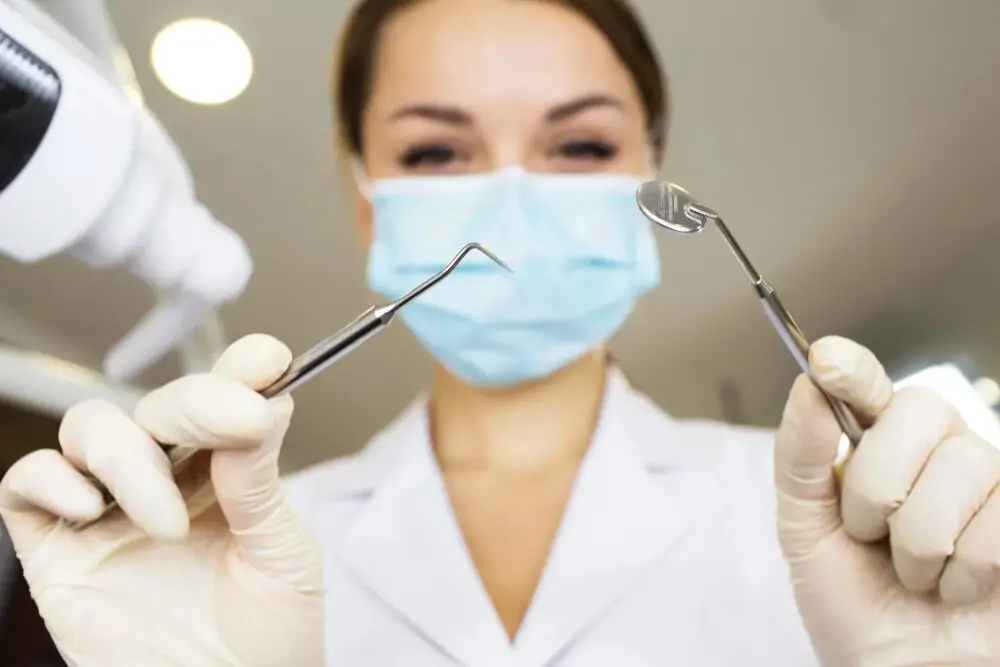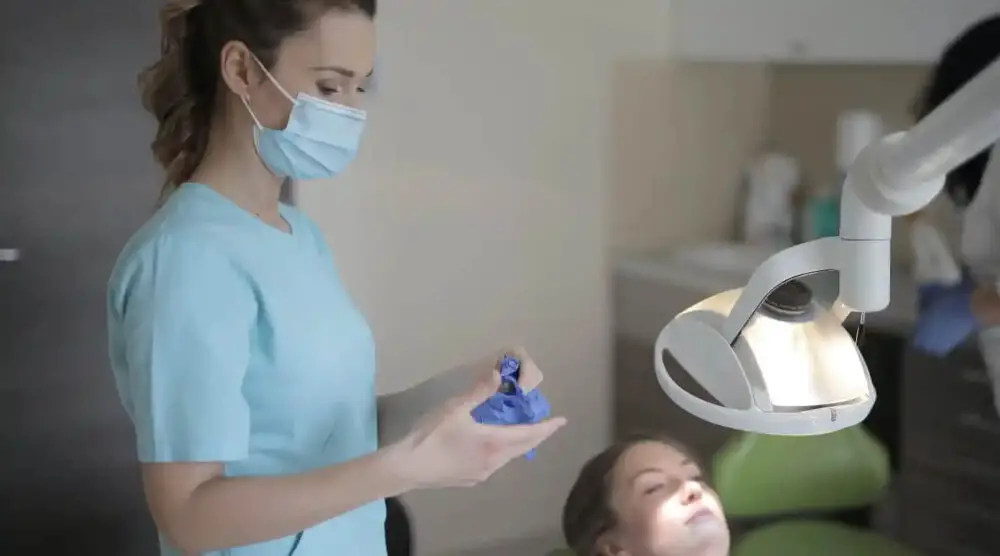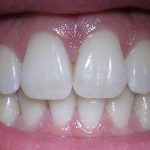When Can I Use a Straw After Wisdom Teeth Removal? A Comprehensive Guide

Wisdom teeth extraction is a common dental procedure that many people undergo, typically in their late teens or early twenties. While it can be a necessary procedure to maintain good oral health, it can also be an uncomfortable and painful experience. One of the most common questions people have after getting their wisdom teeth removed is when they can start using a straw again. The answer is not as straightforward as one might think, as there are several factors that can affect the healing process. In this comprehensive guide, we will explore when it is appropriate to start using a straw after wisdom teeth removal and provide helpful tips for a smooth recovery. After wisdom teeth removal, the recovery period can be a challenging time for many patients. Pain, swelling, and difficulty eating are just a few of the common issues that can arise. One of the most important things you can do during this time is to follow your dentist’s post-operative instructions carefully. This includes avoiding certain foods, practicing good oral hygiene, and avoiding any activity that could disrupt the healing process. Using a straw is one such activity that can potentially cause complications, which is why it is essential to understand when it is safe to start using one again. By following these guidelines, you can help ensure a speedy and successful recovery from your wisdom teeth removal.
Wisdom teeth removal is a common surgical procedure that involves extracting the third molars, located at the back of the mouth. These teeth usually appear in early adulthood or late teenage years, and in many cases, they cause problems such as impaction, infection, or overcrowding. The surgery can be performed under local or general anesthesia, depending on the complexity of the case. The dentist or oral surgeon will make incisions in the gum tissue and remove the wisdom teeth carefully. After the procedure, patients are advised to rest and follow post-operative instructions, including avoiding solid foods, smoking, and using straws. With proper care and attention, patients can recover quickly and resume their normal activities in a few days.
Taking care of yourself after surgery is crucial to ensure a smooth and speedy recovery. After wisdom teeth removal, it is especially important to follow post-operative instructions provided by your dentist or oral surgeon. These instructions may include avoiding certain foods and activities, practicing good oral hygiene, and taking prescribed medication as directed. Neglecting to care for yourself properly after surgery can lead to complications such as infection, dry socket, and delayed healing. By taking the necessary precautions and following your dentist’s advice, you can ensure a successful recovery and return to your normal activities as soon as possible.
Why Can’t You Use a Straw After Wisdom Teeth Removal?

After wisdom teeth removal, it’s essential to avoid using a straw for a few days. This is because the suction created by the straw can dislodge the blood clot that forms in the socket, leading to a painful condition called dry socket. Dry socket occurs when the blood clot that forms after a tooth extraction is dislodged, exposing the bone and nerves underneath. This can cause severe pain and slow down the healing process, making it essential to avoid any actions that can disrupt the clot formation. Using a straw creates negative pressure in the mouth, which can disturb the socket and lead to dry socket. This is why experts recommend avoiding straw usage for at least three to four days after wisdom teeth removal. During this time, it’s best to stick to a soft or liquid diet and drink directly from a cup or glass, avoiding any sucking or spitting actions. Following these precautions can help ensure a smooth and speedy recovery after wisdom teeth removal.
After a wisdom teeth removal, the healing process can be delicate and require special care. Two things to be cautious of are suction and dry socket. Suction, such as from using a straw, can dislodge the blood clot that forms in the empty tooth socket, which can lead to a painful condition called dry socket. Dry socket occurs when the blood clot is lost, exposing the nerves and bone in the socket. This can cause intense pain, bad breath, and a foul taste in the mouth. It is important to avoid suction for the first few days after wisdom teeth removal to allow the blood clot to properly form and prevent the risk of dry socket.
Using a straw too soon after surgery, particularly after wisdom teeth removal, can be extremely dangerous. When you suck on a straw, the suction can dislodge the blood clot that forms in the socket where the tooth was removed. This blood clot is crucial to the healing process because it helps to protect the sensitive nerve endings and bone underneath. If the clot is removed, it can result in a painful condition known as dry socket, which can delay the healing process and make it difficult to eat or speak comfortably. Additionally, using a straw can cause negative pressure in the mouth, which can lead to complications such as infection or bleeding. It is therefore essential to wait until your dentist or oral surgeon gives you the green light before using a straw or engaging in any other activities that could interfere with the healing process.
Following postoperative instructions is crucial for a successful recovery after any type of surgery, including wisdom teeth removal. These instructions are designed to help minimize discomfort, reduce the risk of complications, and promote healing. Ignoring or neglecting postoperative instructions can lead to delayed healing, infection, and other potential complications that can prolong recovery time and cause unnecessary pain and discomfort. By following the instructions provided by your dentist or oral surgeon, you are taking an active role in your recovery and ensuring the best possible outcome. It’s important to remember that every patient’s recovery is unique and may require different instructions, so it’s essential to communicate with your healthcare provider if you have any questions or concerns.
When Can You Use a Straw After Wisdom Teeth Removal?

After wisdom teeth removal, it is important to take care of your mouth to ensure quick and safe healing. One of the concerns that patients have after the procedure is when they can start using a straw. Although it may seem like a small matter, using a straw after wisdom teeth removal can actually cause complications and delay the healing process. Drinking from a straw creates suction in the mouth, which can dislodge the blood clot that forms over the extraction site. This clot is essential for healing as it protects the area and promotes the growth of new tissue. Dislodging the clot can cause a painful condition called dry socket, which can delay healing and require further treatment. Therefore, it is recommended that patients avoid using a straw for at least the first 24 hours after wisdom teeth removal. After the first 24 hours, patients may be able to start using a straw, but it is still important to be cautious. It is recommended that patients use a soft, flexible straw and avoid drinking anything too cold or too hot. Drinking something too hot or too cold can cause sensitivity and discomfort in the extraction area. Additionally, patients should avoid drinking carbonated or alcoholic beverages, as these can also cause discomfort and delay healing. It is important to remember that every patient is different, and some may take longer to heal than others. Therefore, it is best to follow the advice of your dental professional and avoid using a straw until you are confident that it will not cause any harm to your healing process.
After wisdom teeth removal, the healing process involves various stages. Initially, the body responds to the surgical trauma by forming a blood clot at the extraction site. Over the course of the next few days, the clot will solidify and begin to fill in the socket left by the tooth. The body then starts to grow new tissue and bone around the clot to eventually fill the gap left by the tooth. During this time, patients may experience swelling, pain, and bleeding. It is important to follow post-operative instructions carefully to ensure proper healing and avoid complications. Gradually, the healing process will lead to the formation of a new, healthy tissue around the extraction site. This process can take several weeks, and patients should exercise patience and take good care of themselves during this time.
Dental professionals recommend that individuals who have undergone wisdom teeth removal should avoid using straws for at least three days after the procedure. Using a straw can create negative pressure in the mouth and dislodge the blood clot that forms over the extraction site, leading to a painful condition known as dry socket. It is important to follow the post-operative instructions provided by your dentist to ensure proper healing and avoid complications. In addition to avoiding straws, patients should also avoid smoking, spitting, and vigorous rinsing for the first few days after surgery. Instead, gently rinsing with salt water can help to keep the mouth clean and promote healing.
Several factors can affect the healing time after wisdom teeth removal. Firstly, the complexity of the procedure can have an impact on how long it takes for the site to heal. More complicated extractions may take longer to heal than simple extractions. Secondly, the individual’s overall health and immune system can play a role in the healing process. A healthy person with a strong immune system may heal more quickly than someone who is ill or has a weakened immune system. Other factors that can affect healing time include age, smoking, medications, and oral hygiene. It’s important to follow post-operative instructions carefully to ensure proper healing and minimize the risk of complications.
After a wisdom teeth extraction, it is crucial to allow the blood clots to form and the healing process to begin. Using a straw too soon after the procedure can disrupt the clotting process and lead to dry socket, a painful condition that can occur when the blood clot is dislodged. Typically, it is safe to use a straw after the first week of recovery, once the initial healing has taken place. However, it is always best to consult with your dentist or oral surgeon to determine the exact timeline for when it is safe to use a straw based on the specifics of your individual case. In the meantime, stick to a soft food diet and avoid any activities that may disrupt the clotting process, such as smoking or vigorous rinsing.
Alternatives to Using a Straw

While straws may seem like an essential tool for sipping drinks, they can be harmful after wisdom teeth removal. The sucking motion required to use a straw can dislodge the blood clot, which is necessary for proper healing. Fortunately, there are several alternatives to using a straw. One option is to use a spoon, which allows you to scoop up liquids without creating a suction motion. Another option is to drink directly from a cup or glass, tilting your head back slightly to avoid the extraction site. If you prefer a straw-like experience, you can try a reusable silicone straw, which is gentle on the mouth and can be easily cleaned. Another alternative to using a straw after wisdom teeth removal is to consume cold liquids, such as smoothies or milkshakes, using a spoon. Cold liquids can help reduce swelling and discomfort, and the spoon allows you to enjoy the same refreshing beverage without the risk of dislodging the blood clot. Additionally, soft foods like mashed potatoes or yogurt can be consumed without the use of a straw, as they can be easily scooped up with a spoon or fork. By utilizing these alternatives to using a straw, you can ensure proper healing after wisdom teeth removal while still enjoying your favorite beverages and foods.
If you’ve recently had a wisdom teeth removal surgery, drinking can be quite challenging. However, there are several alternative drinking methods that you can consider. Firstly, you can try drinking from a cup and using a spoon to slowly sip and swallow liquids. Secondly, you can use a syringe to squirt liquids directly into your mouth, making sure not to apply too much pressure. Thirdly, you can try drinking through a sports bottle with a straw-like spout, as this can be easier to control than a regular straw. Lastly, you can try drinking warm or room temperature beverages, as they may be easier to swallow than cold ones. By using these alternative drinking methods, you can stay hydrated and comfortable during your recovery period.
Recovering from wisdom teeth removal can be a daunting experience, but there are ways to make it easier. First, make sure to follow all post-operative instructions given by your dentist, including taking prescribed pain medication and avoiding certain foods. It’s also important to stay hydrated and get plenty of rest. Applying ice packs to the affected area can help reduce swelling and discomfort. Additionally, practicing good oral hygiene, such as gently brushing your teeth and using a saltwater rinse, can aid in the healing process. Remember to be patient and allow your body time to heal, as rushing the recovery process can lead to complications. By following these tips, you can make your recovery after wisdom teeth removal as smooth as possible.
In summary, using a straw after wisdom teeth removal is not recommended during the first few days of recovery because it can dislodge the blood clot and delay the healing process. The suction of the straw can create a negative pressure in the mouth, which can cause the blood clot to break apart and expose the underlying bone and nerves. It is best to avoid using a straw for at least 24-48 hours after the surgery and to drink plenty of fluids directly from a cup or glass instead. After the first few days, using a straw can be gradually introduced, but it is still important to be cautious and gentle while doing so to prevent any complications. Overall, it is essential to follow the post-operative instructions provided by your dentist or oral surgeon to ensure a smooth and successful recovery.
Following postoperative instructions is crucial for a successful recovery after any dental surgery, including wisdom teeth removal. These instructions are carefully crafted to ensure that the patient’s recovery is as smooth and comfortable as possible, while also minimizing the risk of complications. Failing to follow these instructions can lead to a host of issues, including prolonged recovery time, increased pain and discomfort, infection, and even permanent damage. Patients should take these instructions seriously and follow them to the letter, including avoiding the use of straws, as they can dislodge the blood clot that forms in the socket and lead to a painful condition called dry socket. Adhering to postoperative instructions, including avoiding straws, will help ensure a quick and comfortable recovery.
Conclusion

In conclusion, the use of a straw after wisdom teeth removal is a topic that requires careful consideration. While it may seem like a convenient option, it is important to follow the recommendations of your dentist or oral surgeon to ensure proper healing and avoid complications. Waiting at least 24-48 hours before using a straw is typically recommended, but it is best to confirm the specific timeline with your healthcare provider. Remember to also avoid smoking, drinking alcohol, and eating hard or crunchy foods during the initial healing period. By taking these precautions and following your dentist’s instructions, you can promote a smooth recovery and get back to your normal routine as soon as possible.







